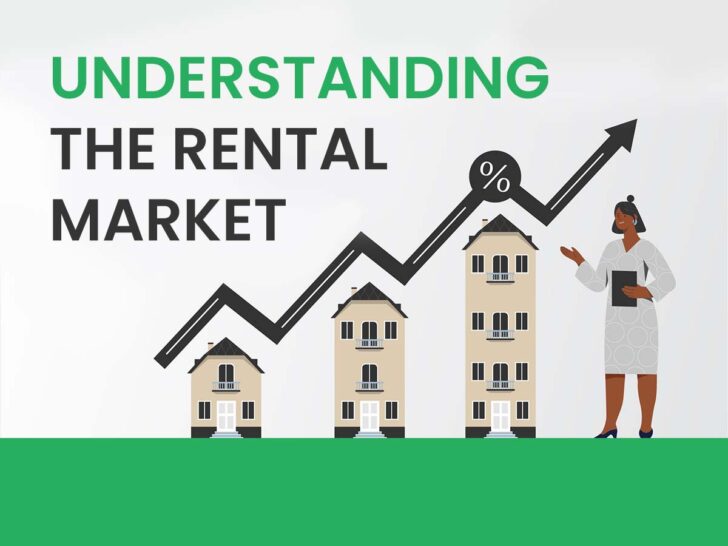-
UMOVE > Blog Posts > Branding > Understanding the Rental Market: Trends and Insights for Property Investors
Blog Details

If you’re a property investor, understanding the rental market is like having a map in a treasure hunt it helps you navigate through the twists and turns of investment opportunities. This article will explore the key trends and insights that can shape your strategy in the rental market. Why should property investors care about the rental market? Simple: it’s where the money flows! The rental market offers continuous opportunities for income and capital growth, making it essential for anyone looking to build wealth through property.
Current Trends in Urban Living
Urban living is no longer just a trend; it’s a lifestyle choice for many. As people flock to cities for work and play, rental properties in urban areas are becoming hot commodities. Think of it as a wave, catch it at the right time, and you’ll ride the financial tide.
Urban living is evolving rapidly, influenced by significant demographic shifts and economic pressures. One of the most notable trends is the rise of co-living spaces, driven primarily by millennials and young professionals who face skyrocketing housing costs. These shared living arrangements allow individuals to split expenses while fostering a sense of community. Co-living facilities, equipped with modern amenities like co-working spaces and gyms, cater to diverse needs from digital nomads seeking flexibility to seniors looking to downsize.
In tandem with co-living, the concept of hybrid buildings is gaining traction. These innovative structures combine residential, commercial, and recreational spaces, promoting a more efficient use of urban real estate. As cities become denser, the separation of living and working spaces is giving way to multifunctional environments where daily needs are met within walking distance.
Another trend shaping the future of urban living is the privatization of city spaces. Public-private partnerships are emerging as governments collaborate with corporations to develop smart and sustainable urban infrastructures. This shift raises questions about governance and community access, as private entities take on roles traditionally held by municipalities.
Demographics Driving Demand
Millennials and Gen Z are reshaping the rental landscape. They crave convenience and access to amenities, pushing up demand for urban rentals. With their affinity for city life, these demographics are like the sun that fuels the growth of rental prices. Their desire for experiences over possessions has led to a preference for flexible living arrangements, such as co-living spaces, where shared amenities foster a sense of community and connection. These innovative housing models not only provide affordable solutions in densely populated cities but also appeal to their social nature.
As urban populations swell, property investors must adapt to these trends by offering rentals that cater to the lifestyle preferences of these younger generations. Smart technology, sustainability features, and communal spaces are now essential elements that attract these tech-savvy renters, ensuring that investments align with their evolving needs.
Technology’s Impact on Rentals
Have you noticed how apps like Airbnb have taken the rental market by storm? The rise of short-term rentals has created new competition for traditional landlords, forcing them to adapt or risk being left in the dust.
The Shift to Remote Work
Remote work is more than a trend; it’s a seismic shift in how we live. Many now seek homes that offer comfortable workspaces, leading to increased demand for rentals that cater to this new lifestyle.
Economic Factors Influencing Rentals
Interest rates, inflation, and unemployment—oh my! These economic factors can significantly impact rental prices. For instance, when interest rates drop, it often leads to higher rental prices, making it crucial for investors to stay informed.
What are rental yields? They measure the return on investment for rental properties, helping investors determine profitability. Higher yields usually indicate a better investment—think of them as the golden nuggets in your property portfolio.
Analyzing Vacancy Rates
Vacancy rates can tell you a lot about the rental market. A sudden spike could indicate oversupply or changing demand, while low rates suggest a strong market. Keeping an eye on these rates is like having a pulse on the rental market’s health.
Investment Opportunities in Rentals
Where should you look for profitable investments? Areas with growing populations, improving infrastructure, and high demand for rentals are typically good bets. Additionally, consider neighborhoods undergoing revitalization or gentrification, as they often see a surge in property values and rental demand. Look for locations near major employment centers, schools, and public transport, which are attractive to potential tenants. Emerging markets or areas with planned developments can also provide excellent investment opportunities, as they often lead to increased demand for housing. By analyzing local economic trends and demographics, investors can make informed decisions that enhance their portfolio’s profitability.
Risks in the Rental Market
Every investment comes with risks. From fluctuating market conditions to changes in tenant preferences, understanding these challenges can help you mitigate potential losses and navigate the rough waters of the rental market.
To thrive in the rental market, you need to be in the know. Use resources like industry reports, property investment blogs, and local market analysis to keep your finger on the pulse of the rental landscape.
Conclusion
Navigating the rental market requires a keen understanding of various trends and insights. By staying informed and adapting to changes, property investors can maximize their opportunities and ensure a fruitful investment journey.